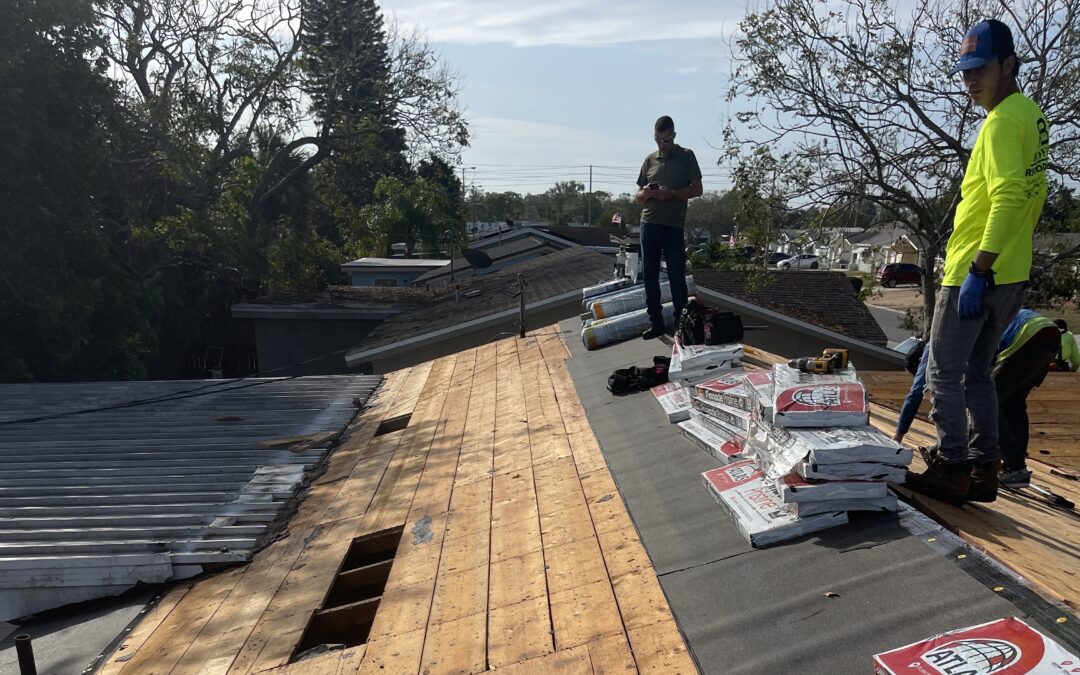You want a roof that holds up in Florida weather. You also want a team that shows up and stands behind the work. Here are clear benefits you can count on.
A local crew knows our wind, rain, and permitting rules. In this guide, we explain why choosing residential roofing services close to home makes your project faster, cleaner, and safer.
- Faster Response and Real Accountability
Storms roll through Tampa Bay with little warning. A nearby crew can reach your home sooner, secure the roof, and start drying the interior. Fast response keeps damage small and the plan simple.
Face-to-face service builds trust. You can visit our local office. You can meet your project lead there. This lets you see the materials for your job. If you need help later, you know just who to call. We are licensed and insured. We use real people to stand behind our work, not a faraway call center.
Local scheduling is more reliable. Crews know the traffic patterns, bridge closures, and HOA access rules in your neighborhood. That means fewer delays and smoother handoffs from inspection to repair.
- Local Codes, Wind Ratings, and Inspections
Florida has strict wind ratings. Local teams build to those ratings every day and know how inspectors read the details. Correct edge metal, fastener patterns, and underlayment choices matter when storms hit.
Permits protect you. We pull permits when required and follow the Florida Building Code. Clear paperwork helps with insurance and future home sales. It also sets a clean record of what was installed and when.
Inspections confirm quality. A local contractor knows how your city or county stages those inspections and plans the job to pass the first time. That saves return trips and keeps your roof on schedule.
- Materials and Methods That Fit Florida
Heat, humidity, and salt air punish weak materials. Local pros guide you to coatings and fasteners that resist corrosion and fading. Proper ventilation and UV-stable components keep the system balanced and durable.
Metal roofing for residential houses is a strong option near the coast. It offers a tight weather seal, excellent wind performance, and long-lasting finishes when detailed correctly. We match panel profiles and coatings to your distance from the water and your budget.
Low-slope areas need special attention. For residential flat roof construction, details make the difference. Tapered insulation, reinforced seams, and well-placed drains move water off the roof and away from walls. Local crews know how Florida downpours test those edges and scuppers.
Local knowledge guides every choice. Teams that work here daily know which products last on our streets and which ones only look good in a brochure.
- Clear Scope, Simple Scheduling, and Clean Work
A written scope keeps everyone aligned. It lists materials, flashing, ventilation, and accessories by location. It also sets the plan for protection, cleanup, and daily site checks.
Daily updates reduce stress. You get plain-language notes about what was done and what is next. If the weather shifts, you hear about it early and know the fallback plan.
Clean work protects your home. We cover landscaping and pools, protect driveways, and run magnet sweeps for stray fasteners. We also coordinate with your HOA and neighbors so deliveries and noise stay manageable. Local crews offering residential roofing services make these steps routine, which is why homeowners trust them for residential roofing in Tampa.
- Ongoing Care, Warranty Help, and Storm Readiness
Roofs need care in Florida. Salt and sun can wear edges and sealants before you notice. Local teams schedule seasonal checks, clean debris, and catch small issues before they grow.
Warranty support is simpler close to home. If a shingle, fastener, or coating needs attention, we can verify the issue and respond quickly. We help you understand the difference between material and workmanship coverage and keep records tidy.
Storm readiness matters. Before hurricane season, we inspect edges, vents, and anchors and make a simple punch list. After a squall, we can check the roof, document any changes, and plan repairs if needed. Service across Tampa, St. Petersburg, Clearwater, and nearby towns means help arrives when you need it.
How to Compare Local Roofers the Right Way
Start with scope. Make sure every proposal covers the same materials, flashing details, ventilation, and cleanup. Ask who leads the crew and how many days are planned on site.
Look at start dates and supply timing. Local teams know which colors and profiles are in stock. They also know which municipalities move permits faster and can plan inspections around that.
Ask for nearby addresses you can drive by. Seeing clean lines, tidy edges, and neat job sites tells you more than any brochure. Use this short checklist when you compare:
- Confirm the license number and current certificate of insurance.
- Ask who pulls permits and who meets inspectors on site.
- Request a written, line-item scope for materials and flashing.
- Verify wind-rating details for edges, fasteners, and underlayment.
- Ask for a schedule with weather backup plans.
- Confirm daily site protection and cleanup steps.
- Request two recent homes within a short drive to view.
- Clarify material and workmanship warranty terms in writing.
Final Takeaway
A local roofing team gives you faster help, code-ready installations, and easier support. That is how you get a roof that looks good and lasts in Florida weather.
We serve Tampa Bay, St. Petersburg, Clearwater and nearby communities with licensed, insured crews who follow Florida Building Code. We inspect, explain options, and build a simple plan that fits your home and budget. Call now to book a free roof inspection and get a clear plan fast.
FAQ for Florida Homeowners
How often should I check my roof in Florida?
A quick check in spring and again before peak storm season is smart, with extra checks after major wind or hail.
What is the benefit of a local permit plan?
Local teams know each city’s process and sequence, which shortens reviews and helps inspections pass the first time.
When is residential flat roof construction the right fit?
It suits low-slope areas, patios, or modern designs and it works best with tapered drainage and reinforced seams.

Chris Price is the CEO of Metro Builders, with over 25 years of experience in construction and project leadership. He’s passionate about building strong teams, delivering quality projects, and driving innovation in the industry.





Recent Comments